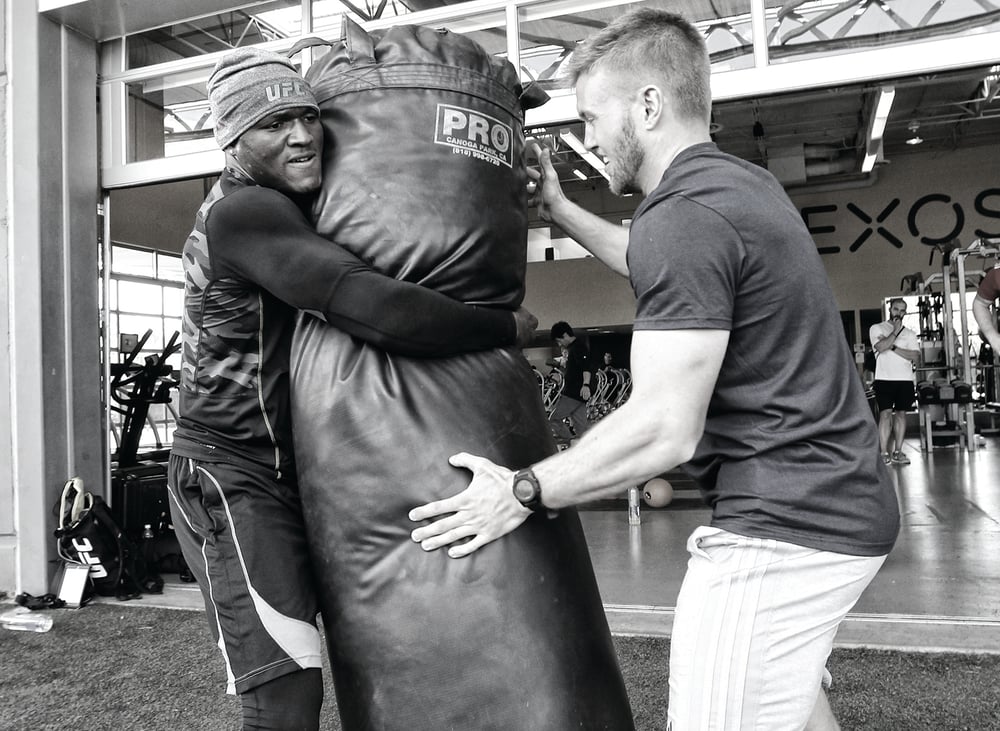
Issue 149
December 2016
One of the UFC’s main goals is to improve its athletes’ health and well-being. It’s desperate to avoid injuries.
But thanks to some insight from some of America’s top trainers, it’s found the solution could be quite simple.
It’s a nightmare for matchmakers and disappointing for fans when mixed martial artists pull out of a scheduled fight.
In an effort to find a cure for constant withdrawals, the UFC is building a new health and performance center in Las Vegas to better educate athletes on smart training practices.
But that’s still a way away from completion, so this year, UFC athletes have been working with the coaches at EXOS. Part of their job was to see where they could help tweak training in a way that would keep them off the treatment table.
Their advice will also likely help you stay healthy too. The experts at the Arizona training facility immediately recognized the actual workouts used by each of the fighters they worked with were sound.

After putting a few dozen through their paces, VP of performance at EXOS, John Stemmerman says the key was to dial the intensity back a bit.
“It’s about having more focused structure and understanding training components and how to put them together and levels of intensity, compared to 100%, all the time. Sometimes it’s OK to go 80% – especially with as many training sessions as they do in a training week.
“(With) smarter training and being able to understand how to manipulate training volumes and intensities, they can do more work and not necessarily get themselves in positions where they’re going to have as many injuries.
"When you’re hitting people in the head and grappling injuries are inevitable, it’s just a matter of how you mitigate as much as possible.”
As well as dialing back the intensity for some training sessions, it’s also important to make sure you have a full day in your training week devoted to recovery.
This advice was useful for Cain Velasquez, who had only fought twice since October 2013, thanks to a long list of ailments.
“For Cain it was super simple,” says performance specialist, Jon Barlow. “He’s got a really good background in strength and conditioning, he’s a tremendous guy, he works really hard. The biggest thing for him was understanding it’s OK to take a bit of time here and there for rest and recovery during camp.
"He already had that kind of thought process coming into us, he was just looking for some confirmation.”

After working closely with the former heavyweight champion for a week, Barlow says he was quick to embrace a change in outlook after experiencing the EXOS ‘regeneration day’, where athletes don’t do much training – they just do some light work and then just get massages all day.
“Once he saw some other professional athletes do this, that’s what clicked for him,” Barlow adds. “He takes it a little bit easier than he did.”
That new, more reserved approach seems to have already been effective. Velasquez was back to his best at UFC 200 in July and has campaigned for another fight this year ever since, but he’s not been able to tie top targets Fabricio Werdum or Stipe Miocic down yet.
Not even the best training practices can help him do that.

REGENERATION
Four ideas to fill a day of recovery
- MOBILITY EXERCISES
Stretching will help improve your flexibility –which will also aid avoiding injury and some techniques.
- POOL WORKOUT
Taking your routine to the water is a low-impact way to work all areas of your body.
- SOFT TISSUE WORK
Grab your foam roller and work out lingering aches, pains and muscle tightness.
- MASSAGE
The best way to unwind – get someone else to get your body ready for the rest of the week’s sessions.
...









